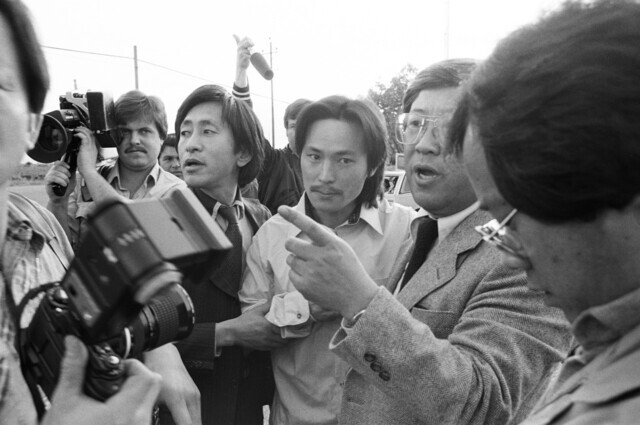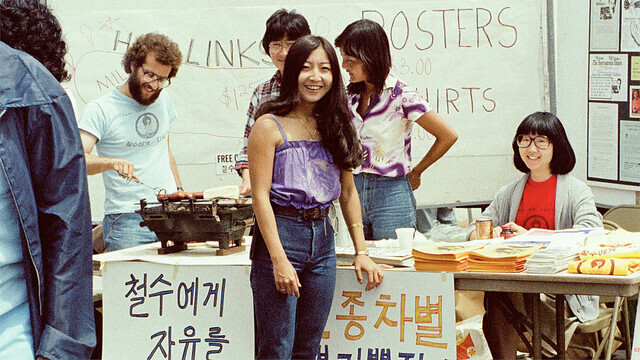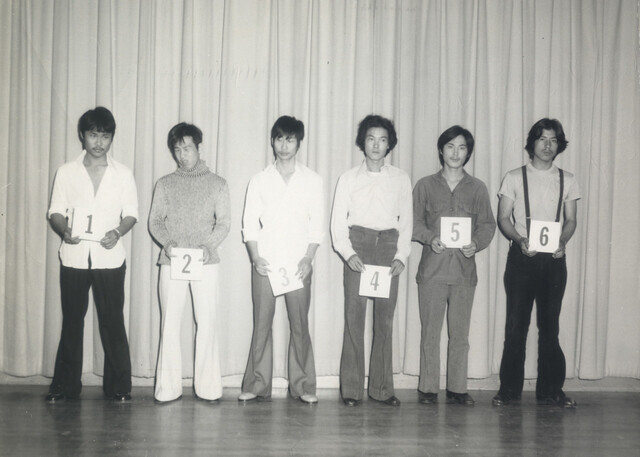hankyoreh
Links to other country sites 다른 나라 사이트 링크
How the story of Chol Soo Lee, who united Asian Americans in fight for justice, was forgotten

“I was not an angel on the outside. At the same time, I was not the devil.”
So said Chol Soo Lee, who was arrested as a suspect in the 1973 murder of a Chinese man in San Francisco, US. He steadfastly maintained his innocence but was nonetheless sentenced to life in prison. After 10 years behind bars, Lee was exonerated and set free thanks to a solidarity movement led by the Korean diaspora in the area.
His release was the product of the “Free Chol Soo Lee movement” that swept the US in the 1980s, spreading not only among Koreans but across all Asian communities in America.
But this milestone in Korean American history was quickly forgotten. The documentary “Free Chol Soo Lee,” which premiered in Korea on Wednesday, shows why the memory of the event faded so rapidly.
Co-directors Julie Ha and Eugene Yi, both second-generation Korean Americans, said they were puzzled by the fact that they never learned about the incident in school, and only found out about the story as adults.
“In American society, the stories of Asian immigrants are not seen as something that should be written down, so we weren’t exposed to such stories in our schoolbooks or curriculum,” said Yi, who visited South Korea last month. “We decided to make the movie with the intention of leaving this story to the next generation.”

Neither being film majors, the two directors decided to make their first feature documentary after seeing former reporter Kyung Won Lee (K.W. Lee) weep at Lee’s funeral in 2014.
K.W. Lee is a US-based journalist who made a crucial contribution to the campaign to save Chol Soo Lee. The events in the movie take place in the streets of San Francisco in June 1973, where Chinese gangs were running rampant. There, a gunfight took place, leaving one man dead.
Five days later, Chol Soo Lee was arrested. The bullet found at the scene was the same kind used in a firearm that Chol Soo Lee had, out of curiosity, borrowed from his friend.
Eyewitness testimonies from three white tourists, who only saw the scene from a distance, were used as the basis for identifying and prosecuting Chol Soo Lee.
As an uneducated and unemployed individual without family support, no one listened to his pleas of innocence.
Years later, K.W. Lee, the only journalist with Korean roots in San Francisco at the time, began to investigate the case. His Japanese friend, Ranko Yamada, became a lawyer in order to save Lee from death row.
The late lawmaker Yoo Jae-kun, who was practicing law in the US at the time, played a major role in mobilizing the Korean American community, and middle-aged housewives even donned hanbok as they took part in protests rallying for justice. Finally, in 1982, Lee became a free man.
But this is only half the story. The second half of the film highlights another tragedy that befell Lee after his release. In the early days of his release, he became a symbol of freedom and was invited to various events, where he heard many sympathetic words and much encouragement, but when the spotlight faded and he was unable to adjust to his regular life.

The film asks why this happened, unraveling the complex layers of Lee’s life one by one. Lee’s life was an amalgam of trauma from many sources, such as the Korean War, child abuse, maladjustment and racism.
“Free Chol Soo Lee” eschews narratives of triumphalism or individual heroism and instead takes a reflective stance on the darker parts of the story, giving the film cinematic depth.
“There are still many ‘Chol Soo Lees’ out there, shunned by society, such as single mothers, adoptees, North Korean refugees, and prisoners,” said Ha. “I hope the movie will make us think about what we can do for the underprivileged, like the power of the people who tried to save just one human being.”
One person who has been waiting for this movie more than anyone else is K.W. Lee, who played perhaps the most important role in saving Lee’s life, continued to support him as he couldn’t find his footing after his release, and was most heartbroken that his story was forgotten.
He was the first Korean American to break into the US mainstream media, won numerous awards for his reporting, and was named one of the 500 greatest journalists of the 20th century.
“More than 40 years ago, some of the most beautiful people to walk this earth worked together to demonstrate the principle that the humblest among us are equal to kings, queens and presidents,” says K.W. Lee, now 95, recalling the movement to free Chol Soo Lee.
K.W. Lee went further to send a message to South Korea, saying, “This is a lesson we urgently need to hear today.”
By Kim Eun-hyoung, senior staff writer
Please direct questions or comments to [english@hani.co.kr]

Editorial・opinion
![[Editorial] Korea must respond firmly to Japan’s attempt to usurp Line [Editorial] Korea must respond firmly to Japan’s attempt to usurp Line](https://flexible.img.hani.co.kr/flexible/normal/500/300/imgdb/original/2024/0514/2317156736305813.jpg) [Editorial] Korea must respond firmly to Japan’s attempt to usurp Line
[Editorial] Korea must respond firmly to Japan’s attempt to usurp Line![[Editorial] Transfers of prosecutors investigating Korea’s first lady send chilling message [Editorial] Transfers of prosecutors investigating Korea’s first lady send chilling message](https://flexible.img.hani.co.kr/flexible/normal/500/300/imgdb/original/2024/0514/7917156741888668.jpg) [Editorial] Transfers of prosecutors investigating Korea’s first lady send chilling message
[Editorial] Transfers of prosecutors investigating Korea’s first lady send chilling message- [Column] Will Seoul’s ties with Moscow really recover on their own?
- [Column] Samsung’s ‘lost decade’ and Lee Jae-yong’s mismatched chopsticks
- [Correspondent’s column] The real reason the US is worried about Chinese ‘overcapacity’
- [Editorial] Yoon’s gesture at communication only highlights his reluctance to change
- [Editorial] Perilous stakes of Trump’s rhetoric around US troop pullout from Korea
- [Guest essay] Preventing Korean Peninsula from becoming front line of new cold war
- [Column] The state is back — but is it in business?
- [Column] Life on our Trisolaris
Most viewed articles
- 1Major personnel shuffle reassigns prosecutors leading investigations into Korea’s first lady
- 2[Editorial] Korea must respond firmly to Japan’s attempt to usurp Line
- 3[Editorial] Transfers of prosecutors investigating Korea’s first lady send chilling message
- 4US has always pulled troops from Korea unilaterally — is Yoon prepared for it to happen again?
- 5[Column] Will Seoul’s ties with Moscow really recover on their own?
- 6Korea cedes No. 1 spot in overall shipbuilding competitiveness to China
- 7Korean opposition decries Line affair as price of Yoon’s ‘degrading’ diplomacy toward Japan
- 8For prestigious university admission, S. Korean students and parents in a war for information
- 9Exchange rate, oil prices, inflation: Can Korea overcome an economic triple whammy?
- 10[Editorial] Perilous stakes of Trump’s rhetoric around US troop pullout from Korea